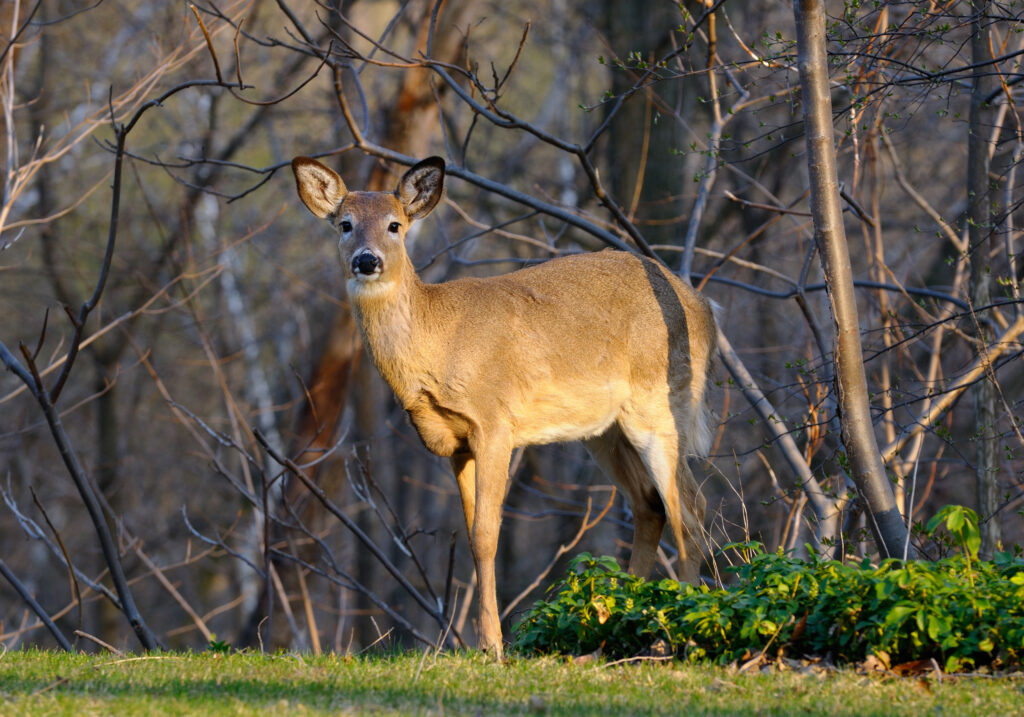As spring unfolds across the United States, the budding flowers and greener landscapes bring with them a surge in wildlife activity. Among the most notable are deer, whose populations in certain regions have not just grown — they’ve exploded. This article delves into the heart of the deer population dynamics, shedding light on the areas most affected by overpopulation and the ripple effects on ecosystems, communities, and even our own backyards.
The Deer Boom: A Closer Look Deer, particularly white-tailed deer, are among North America’s most adaptable and prolific species. Their numbers have seen a dramatic increase over the past century, with estimates suggesting a leap from a few hundred thousand in the early 1900s to over 30 million today. This population boom is most pronounced in the Eastern U.S., including states like Connecticut, Rhode Island, and Massachusetts, where dense forests blend into urban and suburban landscapes, creating ideal conditions for deer to thrive.
The Factors Behind the Surge Several factors contribute to the burgeoning deer numbers:
**Habitat Expansion**: Urbanization, ironically, has created more edge habitats (transitional zones between forest and open areas), which deer prefer. These areas offer abundant food and lower pre-risks.
**Decline in Natural Predators**: With the reduction of predator species such as wolves and cougars, deer populations face fewer natural checks and balances.
**Adaptive Behaviors**: Deer have shown remarkable adaptability to human presence, comfortably foraging in suburban gardens, parks, and roadsides.
The Consequences of Overpopulation While observing deer can be a delightful experience for nature lovers, their overpopulation carries significant consequences:
**Ecosystem Imbalance**: Over-browsing by deer can severely impact forest undergrowth, affecting plant diversity and habitat for other wildlife species.
**Agricultural Damage**: Farmers in heavily populated deer areas report significant crop losses, impacting local economies and food supplies.
**Road Accidents**: Increased deer populations lead to more vehicle collisions, posing safety risks to drivers and animals alike.
**Health Concerns**: Dense deer populations are closely linked to the spread of tick-borne diseases, such as Lyme disease, highlighting a critical public health dimension.
Looking Forward: Coexistence and Management Addressing the deer population challenge requires a multifaceted approach, balancing ecological health, human safety, and the preservation of these iconic creatures. From regulated hunting and fertility control to the creation of wildlife corridors and public education on coexisting with deer, communities are exploring a range of strategies. For homeowners and businesses, particularly in states like Rhode Island, Massachusetts, and Connecticut, understanding deer behavior and population dynamics is crucial. Whether it’s safeguarding gardens or preventing Lyme disease, informed decisions can make a world of difference in navigating the deer dilemma. As we move forward, it’s clear that our interactions with deer will continue to evolve. By fostering a deeper understanding and respect for these animals and their habitats, we can work towards solutions that benefit both human and deer populations alike. The journey through America’s changing landscapes, marked by the presence of these gentle yet resilient creatures, is a testament to the complex dance between nature and civilization.

